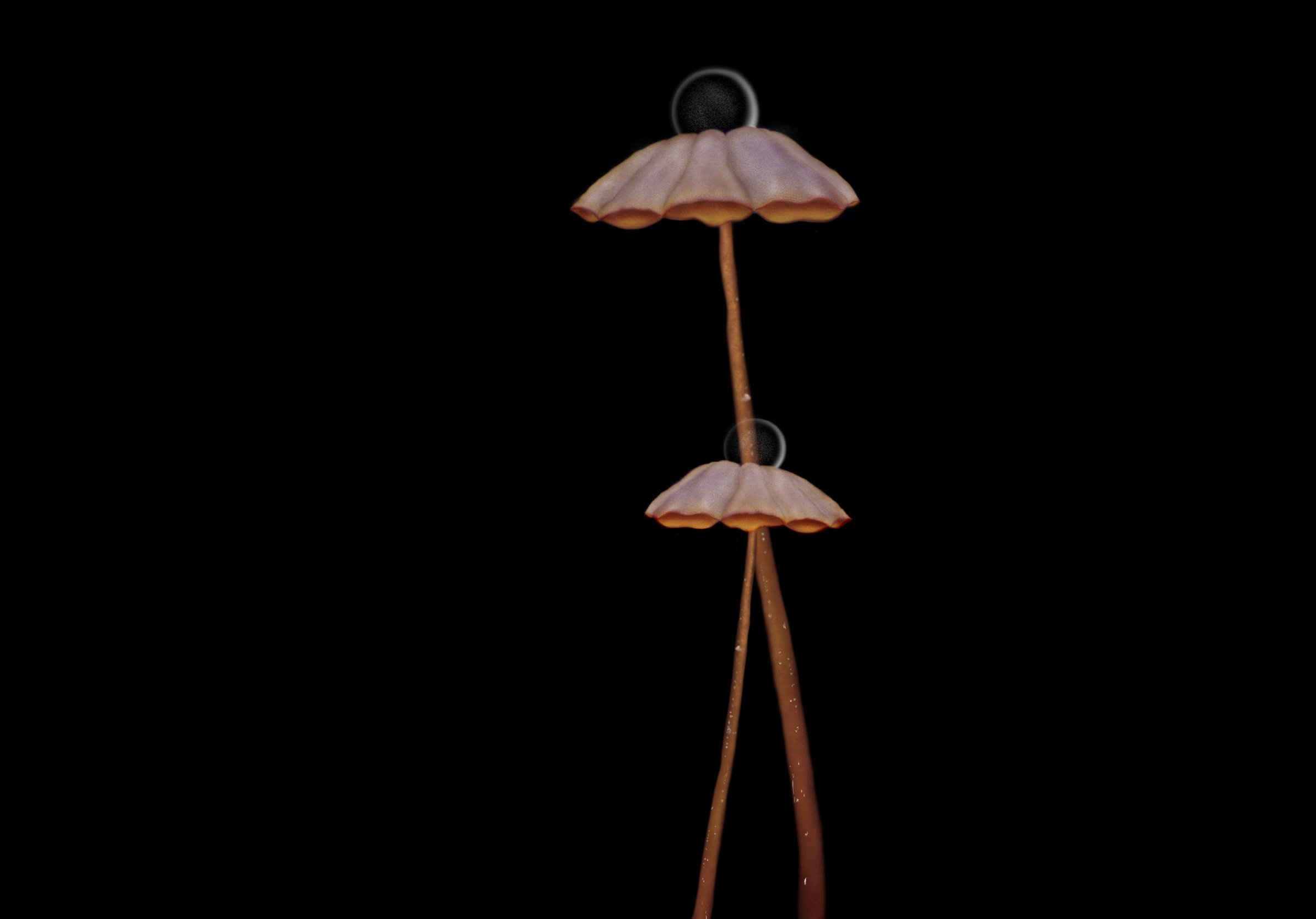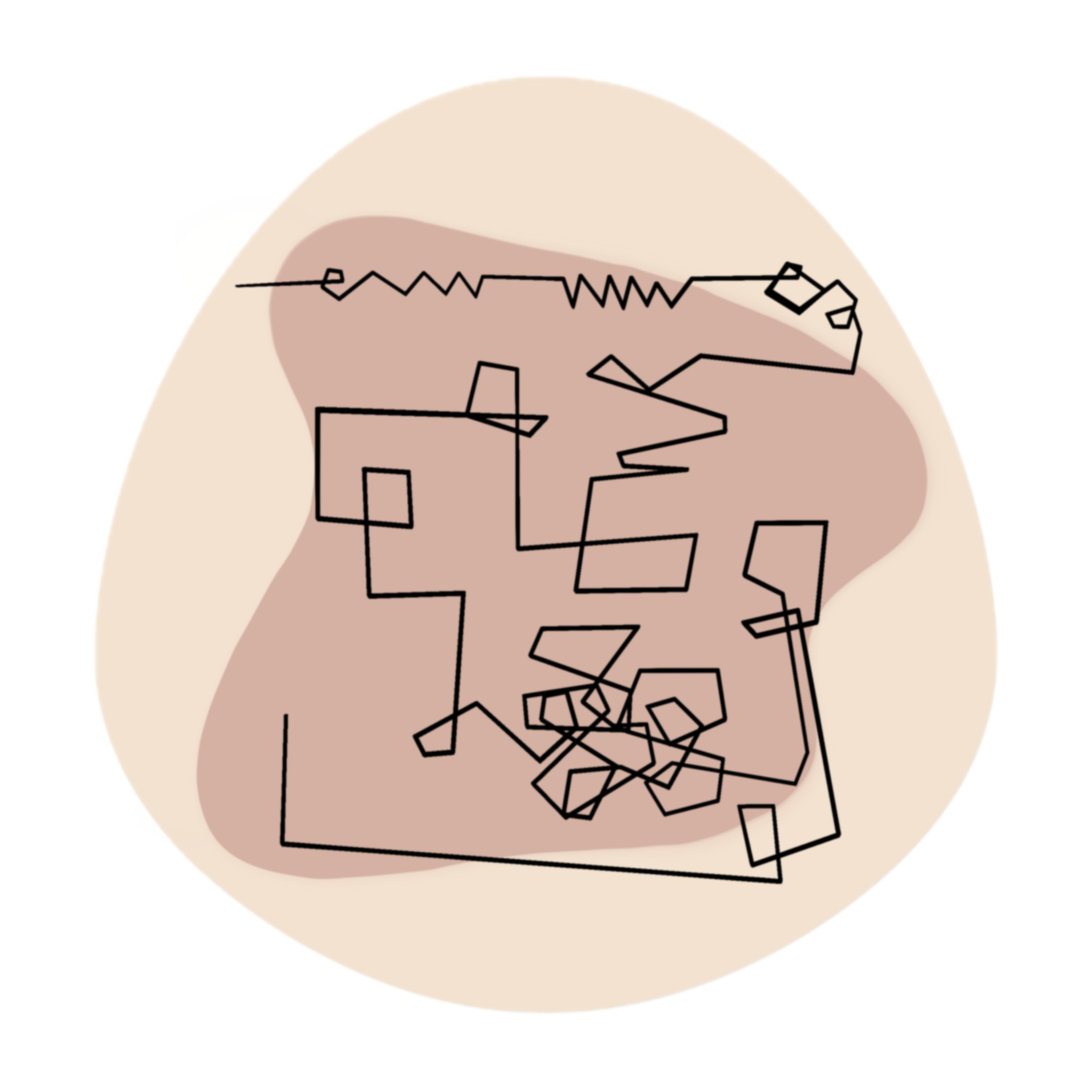Fruiting Body
The fruiting body also known as sporocarp, is the part of the mushroom that we see, the part that emerges from the below, the resulting form of multiplicities of strands of hyphae self-organizing into a personal order (Sheldrake, 2021; Whitehead, 1929). Functioning as the sexual organ of the mushroom, their primary intention is to spread spores (Sheldrake, 2021). However, they can do so much more; they can heal, provide energy and nutrients, facilitate balance, guide spiritual journeys, they can even halt life. They introduce the mushroom to the world. Rather than seeing these bodies themselves as ‘the mushroom’, it’s more accurate to conceptualize fruiting bodies as a partial representation of the greater mushroom body, the mycelium which exists unseen. The fruits are a process of repetition, growth, and decay; a passing-by formation of the temporally enduring mycelium body.















In Process… Thinking about the vast varieties of mushroom kinds, all having different effects or functions, I reflect on the different effects and functions of the creatures that emerge from play. That is to say, play produces so many little creatures that seem pointless and go unnoticed throughout its flow, but these little creatures are not pointless, and they are not erased if left behind during events of play, they are kept in a carrier bag until they are found to be useful. Is play producing a bag-of-tricks to draw from for future spontaneous creation? Is the evolutionary 'purpose’ of play to produce and gather possibilities for future application of improvised creativity (creating the self-in-relation). Merlin Sheldrake, during a podcast with Matthew David Segall and Thomas Jackson, discusses the secondary compounds that mushrooms produce which seem to have no overt function, that is, they are not used for the primary/daily functions of the mushroom. Sheldrake suggests that they are engaging in a kind of play, a chemical improvisation, the secondary substances aren’t purposeless in that they may be held for the what-if of the future. Segall simplifies this notion of preparatory play as “fun proceeds function”, or non-linearly, “fun affords function”. …In Process
In Process… I am inspired by the vector character of spores. That is to say, the way in which they become mobile for the purpose of assuring proliferation. They require a kind reciprocal relation, the fruiting body to the entities in its environment. In his book Entangled Life, Merlin Sheldrake discusses the penetrative aroma of the truffle as a means of attracting mechanisms for spore transmission. He explains that it is the alluring nature of the scent that pulls in animals that will dig it up and ensure its dissemination and therefore its proliferation. I can’t help but think of social discourses and their affective nature as a kind of aromatic allure. That it is because social discourses are affective that they are able to so easily attract us, and further, elicit such intense responses from us. As though social discourses are the fruiting bodies representing a larger entity beneath. …In Process
In Process… The symbiotic relationship between fungus and other elements of nature …In Process
References:
Glass, N. L., Jacobson, D. J., & Shiu, P. K. (2000). The genetics of hyphal fusion and vegetative incompatibility in filamentous ascomycete fungi. Annual review of genetics, 34(1), 165-186.
Read, N. D., and Roca, M. G. (2006). Vegetative hyphal fusion in filamentous fungi. In F. Baluska, D. Volkmann, and P. W. Barlow (eds.), Cell-cell channels. pp. 87-98. Landes Bioscience. Available from: https://www.ncbi.nlm.nih.gov/books/NBK5993/
Segall, M., D. (2023). Crossing the Threshold: Etheric Imagination in the Post-Kantian Process Philosophy of Schelling and Whitehead. Integral Imprint.
Sheldrake, M. (2021). Entangled life: How fungi make our worlds, change our minds & shape our futures. Random House Trade Paperbacks.
Shoji, J-y., Charlton, N.D., Yi, M., Young, C.A., Craven, K.D. (2015). Vegetative Hyphal Fusion and Subsequent Nuclear Behavior in Epichloë Grass Endophytes. PLoS ONE 10(4): e0121875. https://doi.org/10.1371/journal.pone.0121875
Whitehead, A., N. (1929). Process and Reality. Free Press. (1985).
